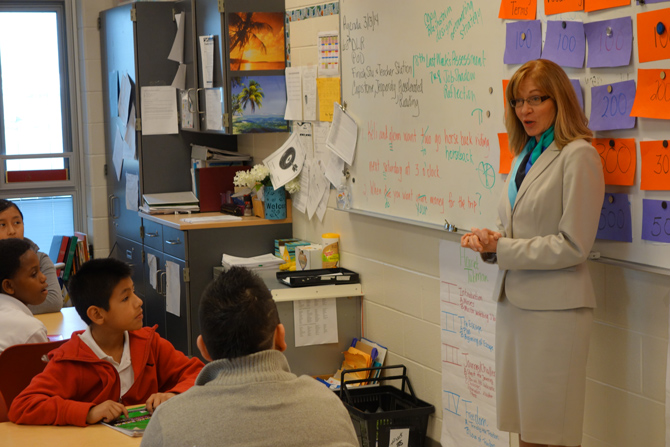On Friday, Affordable Language Services kicked off a case study at the Academy for Multilingual Immersion Studies. Over the course of ten weeks, the students in Ms. McNatt’s junior high class will help us solve an important problem: how many interpreters do we need, and what languages should they speak, for the Cincinnati of the future?
To get it all started, Lynn and I went to AMIS and spoke to our new recruits. They were really excited to tackle the problem!
 This collaboration is part of a pilot program pioneering case-based learning for K-12 education through thePartnership for Innovation in Education, funded by a $1.1 million grant from Ohio’s Straight A Fund. A mainstay of business schools, cases provide context for work done in the classroom, helping to engage students and prepare them for the real world.
This collaboration is part of a pilot program pioneering case-based learning for K-12 education through thePartnership for Innovation in Education, funded by a $1.1 million grant from Ohio’s Straight A Fund. A mainstay of business schools, cases provide context for work done in the classroom, helping to engage students and prepare them for the real world.
Our case builds on a real problem we face. The demand for interpreters is constantly changing in tandem with our community, and we are always working to stay ahead of those trends. It takes at least a couple weeks to bring on a skilled and qualified applicant, and finding those potential interpreters can take even longer, so we need all the advance notice we can get.
AMIS is a Spanish immersion school near Cincinnati’s Roselawn neighborhood. It’s part of the Cincinnati Public School system and is an International Spanish Academy. As an immersion school, most classes are taught in Spanish, including math, science, and social studies.
The case pairs nicely with AMIS. A handful of student in the class are from Spanish-speaking homes, and another couple from other non-English-speaking homes. Many of those children had served as informal interpreters for their parents, and have stood by while professional interpreters worked. This is exactly the real-world connection case-based learning is built around.
